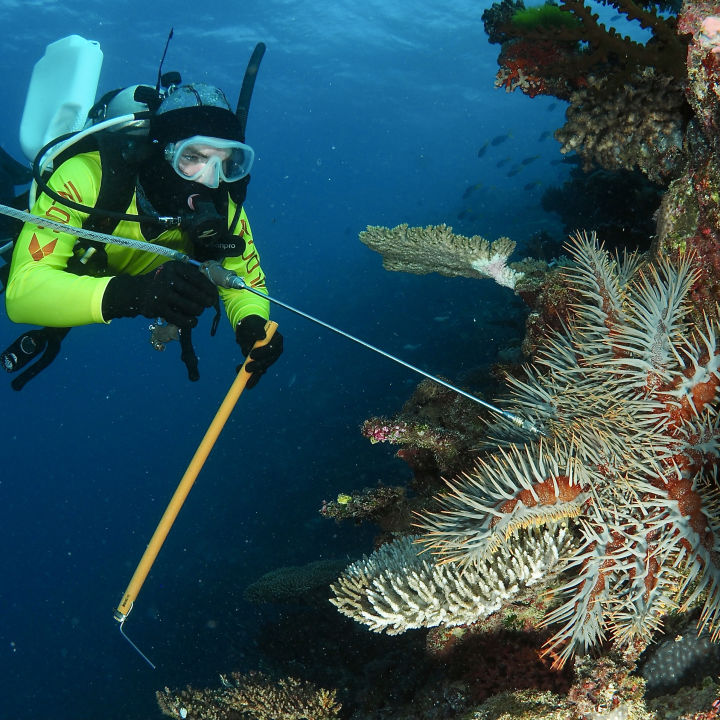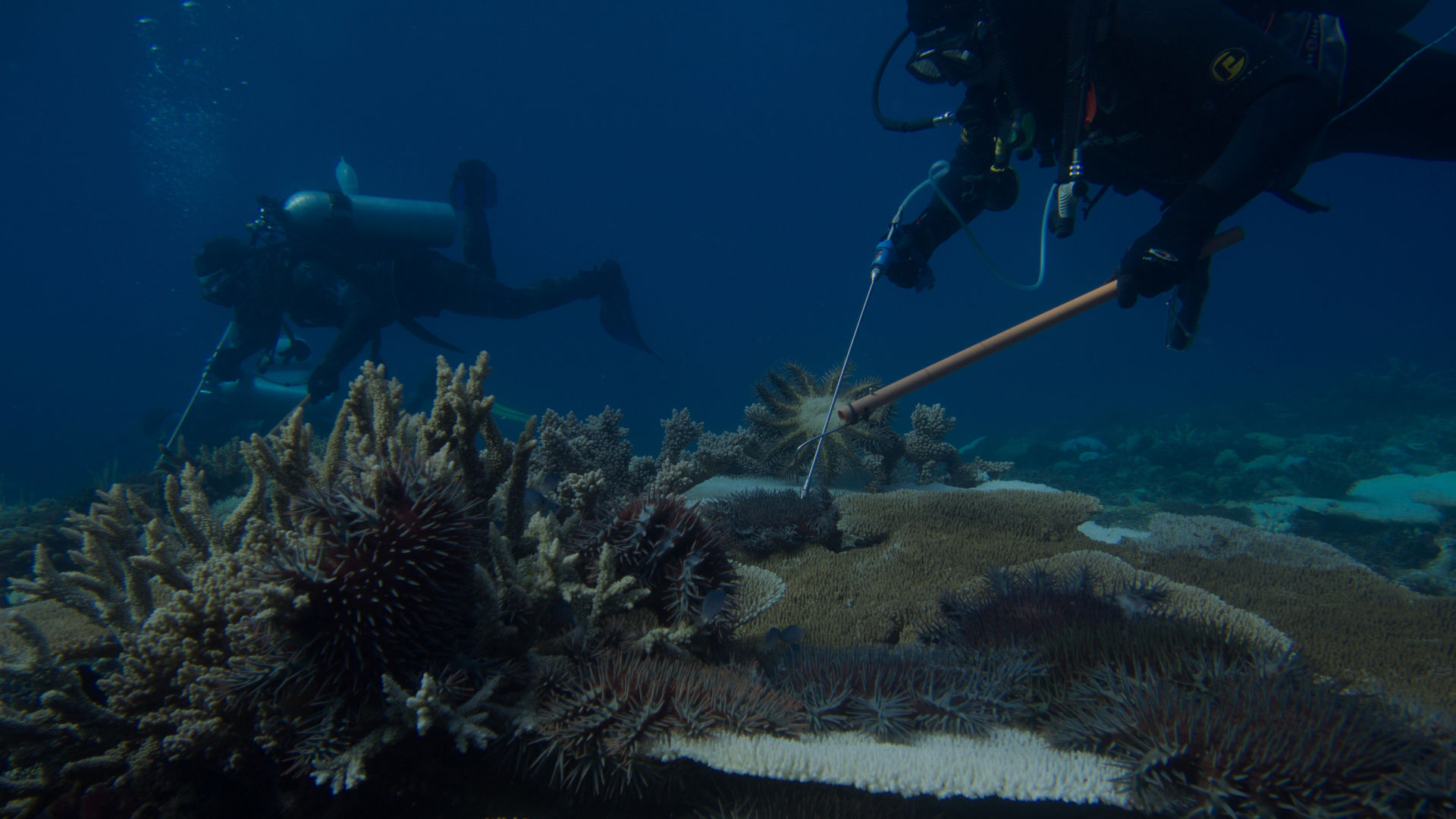
Crown-of-thorns starfish
Crown-of-thorns starfish (COTS for short) feed on coral. These spiky marine creatures occur naturally on reefs in the Indo Pacific region, including the Great Barrier Reef.
#Facts about crown-of-thorns starfish
Nocturnal by nature, COTS can move at speeds of up to 20 metres an hour.
COTS prey on nearly all corals and can eat their way through 10 square metres of it a year.
COTS are covered in spikes containing toxins that are venomous to both humans and marine creatures.
COTS are the world’s second largest starfish, reaching up to 1m.
COTS eat by extruding their stomachs out from their bodies, wrapping it around corals and digesting their tissues.
Like most starfish, if it loses one of its arms, a COTS can regrow a new one in around six months.
An adult crown-of-thorns starfish can live up to nine months without eating.
During an outbreak, which is when 15 or more COTS are found in a one hectare area, the starfish can strip a reef of 90% of its living coral tissue.
Natural predators include the giant triton snail, titan trigger fish, starry pufferfish, humphead maori wrasse, yellow margin trigger fish, harlequin shrimp and lined worm.
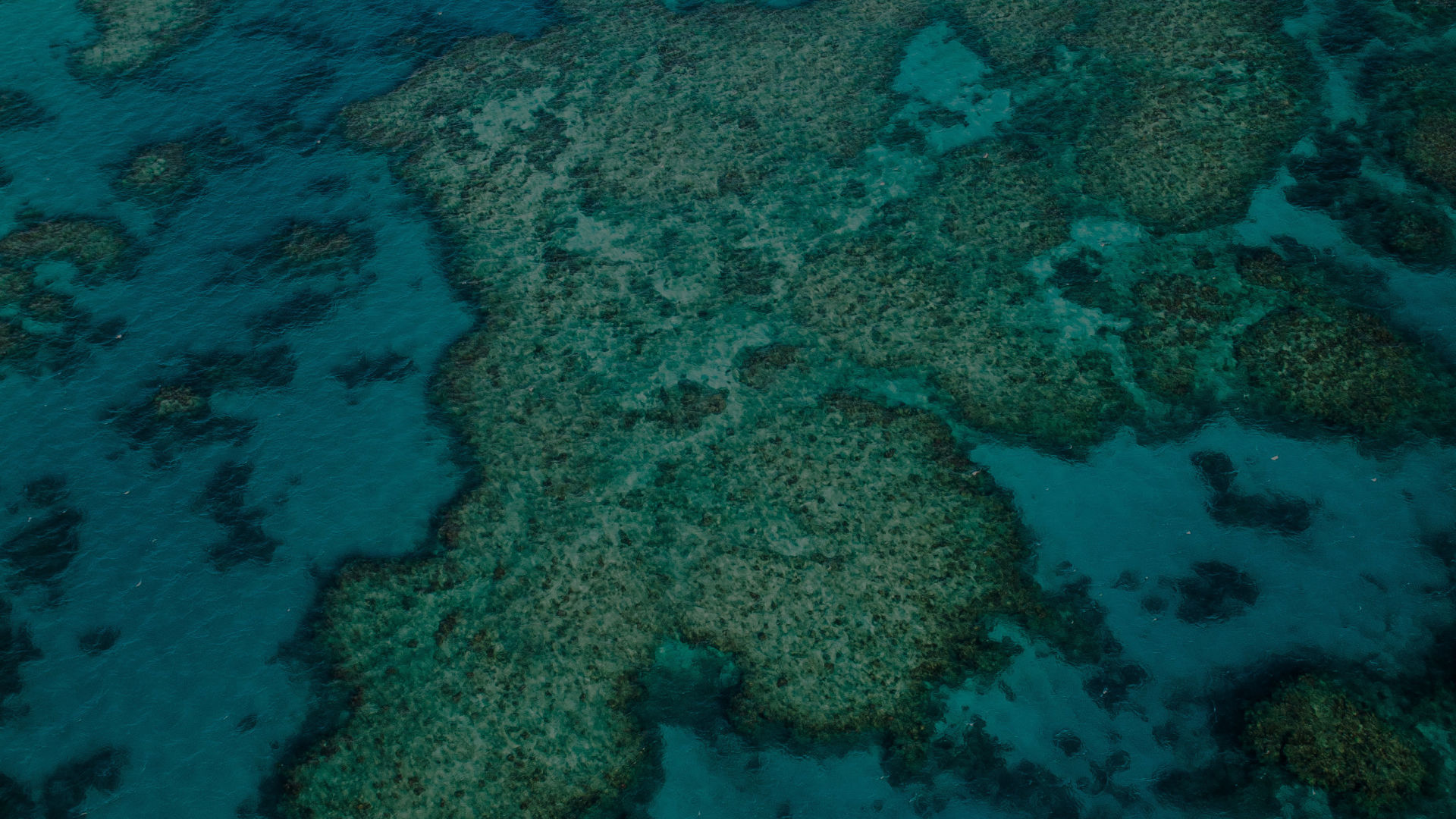
#Why are COTS a problem?
In normal numbers on healthy coral reefs, COTS are an important part of the ecosystem. They tend to eat the faster growing corals which gives the slower growing species a chance to catch up, enhancing the coral diversity of our reefs. However, when the coral-eating starfish appear in outbreak proportions, the impact on coral reefs can be disastrous.
#Crown-of-thorns starfish control
On the Great Barrier Reef, we reduce outbreaks using a targeted COTS control program, with trained divers injecting the starfish with bile salt (made in the liver of oxen) or vinegar. This kills the starfish but doesn’t harm the surrounding ecosystem.
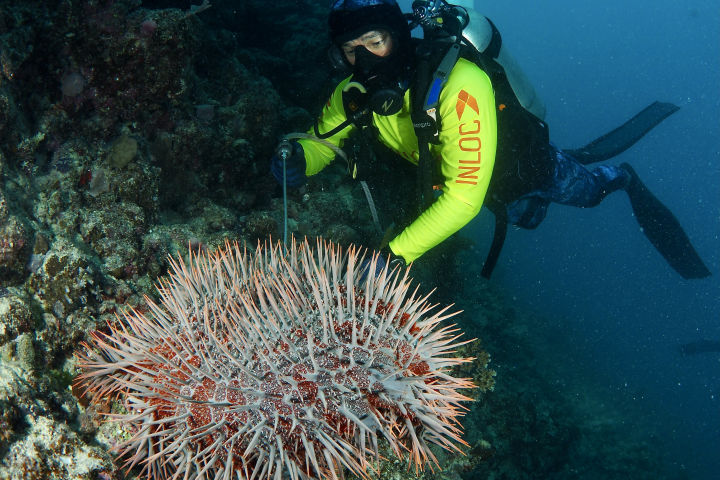
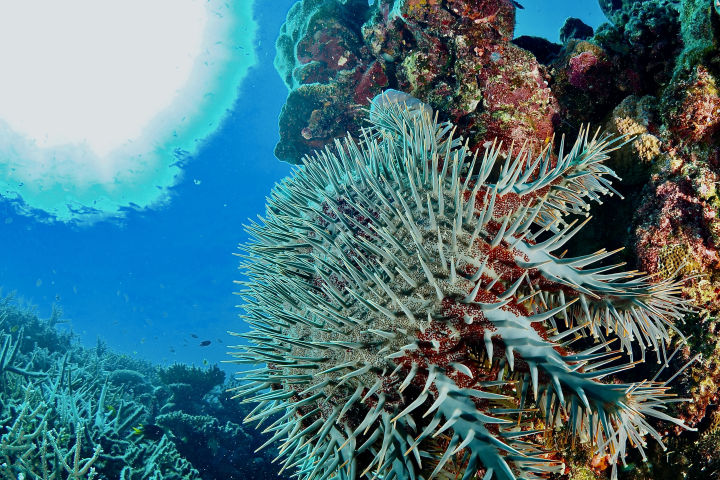
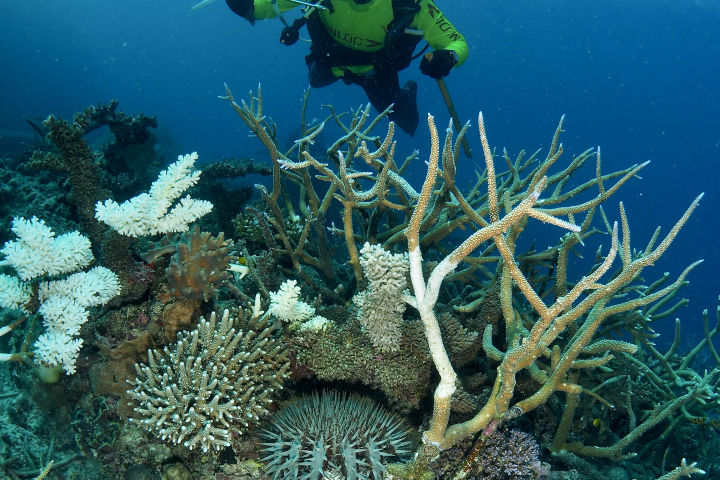
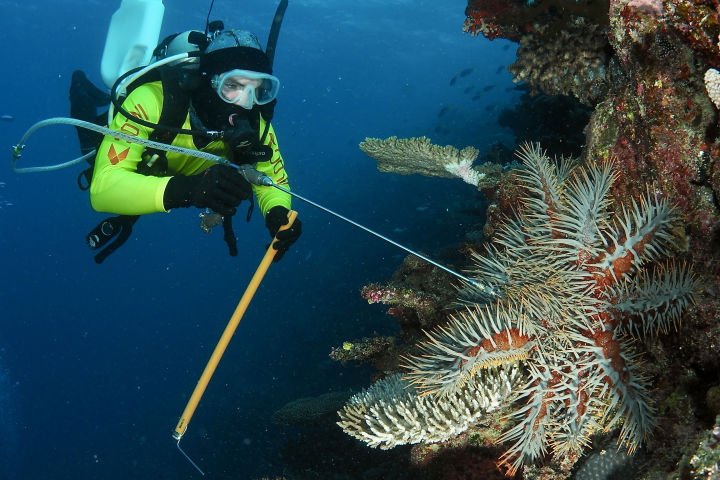
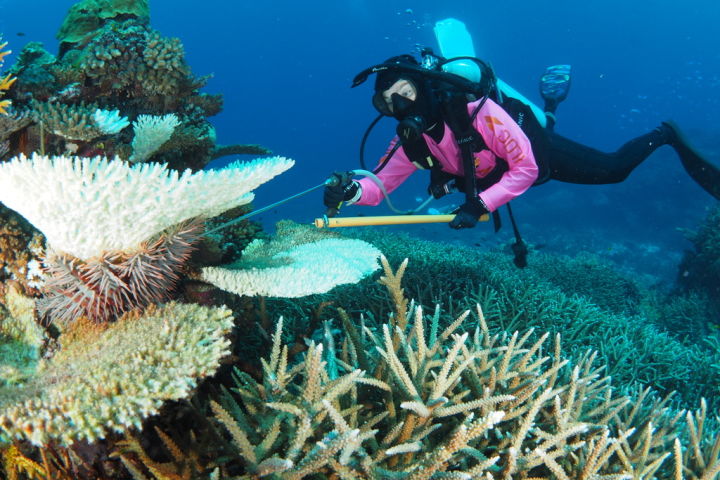
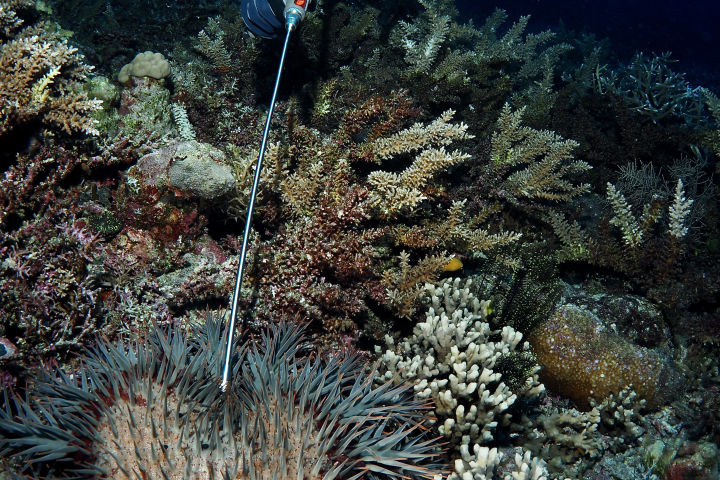
#Crown-of-thorns starfish outbreaks threaten our Reef and its marine life
That's why we're expanding efforts to control crown-of-thorns starfish and reduce coral mortality. By bringing together Reef managers, Traditional Owners, scientific experts and industry leaders, the Reef Trust Partnership's COTS Control component is managing the current COTS outbreak and finding innovative and scalable ways to address this key threat to the Reef into the future.

#Tomorrow needs you, now.
The Great Barrier Reef is in desperate need of support. Donate today to help grow new baby corals, creating a better future for the Reef.

